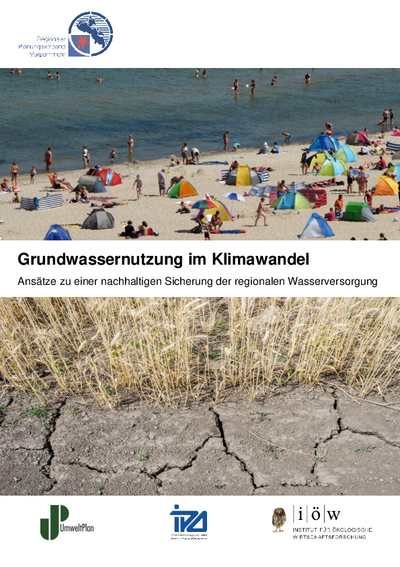Usage of Groundwater in Climate Change Approaches to a sustainable security of the regional water supply
Climate change is no longer just a scenario, but a reality. Record summer temperatures and declining precipitation on the one hand, and rising demand for water, such as for increasing summer tourism or for irrigation in agriculture on the other hand, pose new challenges for cities and municipalities.
The brochure „Usage of Groundwater in Climate Change – Approaches to a sustainable security of the regional water supply“ presents the current developments of the region Vorpommern and evaluates possible measures with regard to their economic profitability.
For this region, public drinking water production accounts for the major part of the production volume, followed by agriculture through field irrigation, process water and livestock watering. A positive development of the population figures in Greifswald and Stralsund, a rising tourismus industry as well as additional demand in agriculture, especially in the summer months, will lead to an increased demand for water. According to calculations of various emission scenarios (A2, A1B and B1), there will be a simultaneous change in the mean annual precipitation and a change in the groundwater recharge rate. A reduction of the groundwater recharge rate and of the groundwater level would impair ecosystems that depend on the groundwater. In order to prevent this and other worst-case scenarios, there a various ecological, engineering and water-use oriented measures.
Their advantages and disadvantage are evaluated in an extended cost-benefit analysis. For example the construction of new wells or pipelines or seawater desalination plants, as well as on the ecological side forest conversion from coniferous to deciduous or mixed forest, forest reproduction or rewetting of moorland areas.
Finally, the Regional Planning Association takes on the important task of securing the drinking water supply in the region and further strengthening an interaction between the involved stakeholders.



